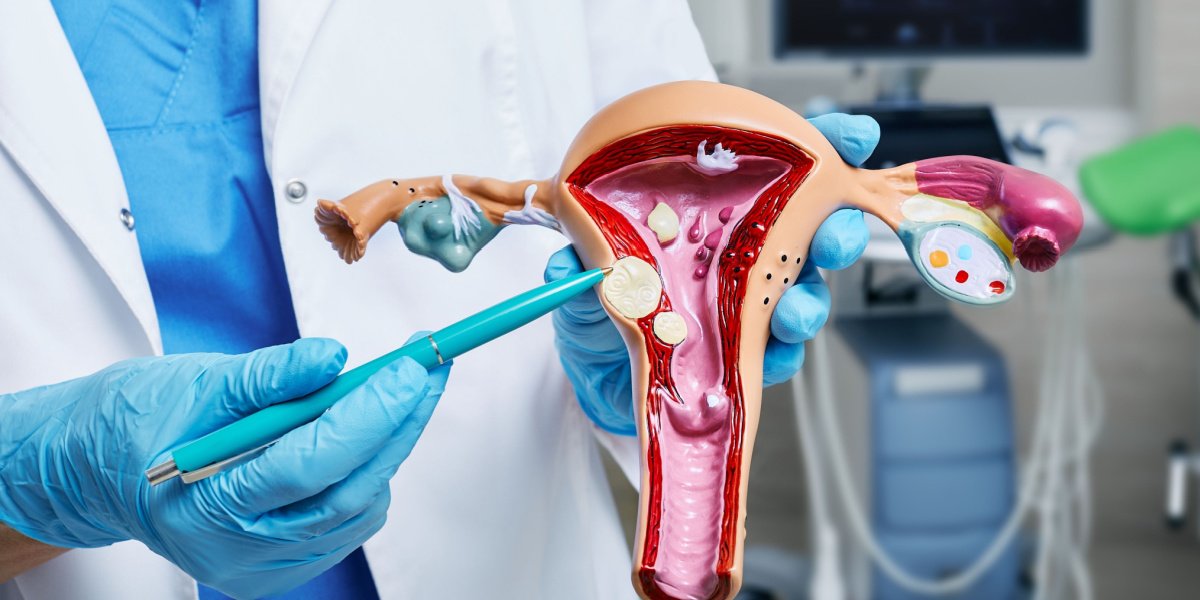Uterine Fibroids
Fibroids are growths of the uterus, or womb. They are also called uterine leiomyomas or myomas. Fibroids are not cancerous and are not thought to be able to become cancerous. However, it can sometimes be difficult to determine if a mass in the uterus is a common fibroid or a rare cancerous tumor.
Fibroids are very common. Approximately 80 percent of women will have fibroids in their lifetime, although not everyone has bothersome symptoms. Treatments are available for fibroid-related problems like heavy menstrual bleeding, pain or pressure in the pelvis, or problems with pregnancy or infertility.

Fibroid Symptoms
Fibroids can range in size from microscopic to the size of a grapefruit or even larger. The majority of fibroids are small and do not cause any symptoms at all. However, some women with fibroids have very heavy or long menstrual periods (more than eight days a month) or pelvic pressure or pain that interferes with their life.
Fibroids are more likely to cause symptoms if the fibroids are large, if there are many fibroids, or if the fibroid is located in certain places in the uterus. Fibroid symptoms tend to get better when a woman no longer has menstrual periods, at menopause.
Increased menstrual bleeding — Fibroids can increase the amount and/or the number of days of menstrual bleeding. Women who have excessive menstrual bleeding are at risk for a low blood count (iron deficiency anemia).
Pelvic pressure and pain — Larger fibroids can cause a sense of pelvic pressure or fullness in the abdomen, similar to the feeling of being pregnant. Sometimes women can even look pregnant when they are not; this appearance is due to the fibroids.
Fibroids can also cause other symptoms, depending upon the size and where they are located in the uterus. As an example, if a fibroid is pressing on the bladder, the woman may feel like she needs to go to the bathroom frequently. Similarly, a fibroid pressing on the rectum can cause constipation.
Problems with fertility and pregnancy — Most women with fibroids are able to become pregnant without a problem. However, certain fibroids that distort the inside of the uterus may cause trouble for women trying to become pregnant or may be related to the fact that older women have more fibroids and more trouble getting pregnant. Fibroids in the outer part of the uterus may have a mild effect on decreasing fertility, but surgically removing these fibroids does not appear to decrease the risk. Studies show that, while women with fibroids may be more likely to have miscarriages than women without fibroids, the increased risk of miscarriage is related to increasing age and not the fibroids. Women with fibroids and reproductive problems should go through a basic infertility or miscarriage evaluation before concluding that the fibroids are responsible for the problem.
Most women with fibroids have a completely normal pregnancy without complications. However, women with a large fibroid (greater than 5 to 6 cm) or more fibroids might have an increased risk of specific pregnancy complications.
Medical Treatment
Most medical treatments use a medicine to reduce the heavy menstrual bleeding, which is common in women with fibroids. A few medical treatments also shrink the fibroid too, and some are focused on reducing pain or correcting anemia. Medical treatments are often recommended before surgical treatments.
Surgical or Interventional Fibroid Treatment:

Your doctor might recommend a surgical or interventional treatment for fibroids if:
- You have fibroid-related heavy menstrual bleeding, pain, or pressure that does not get better with medical treatments
- You are trying to get pregnant and fibroids appear to be interfering
- The size of the fibroid is giving you symptoms
Myomectomy
- Abdominal myomectomy.
- Abdominal myomectomy.
- Hysteroscopic myomectomy
Endometrial ablation
Uterine artery embolization
Magnetic resonance guided focused ultrasound
Laparoscopic ultrasound-guided radiofrequency ablation
Hysterectomy





